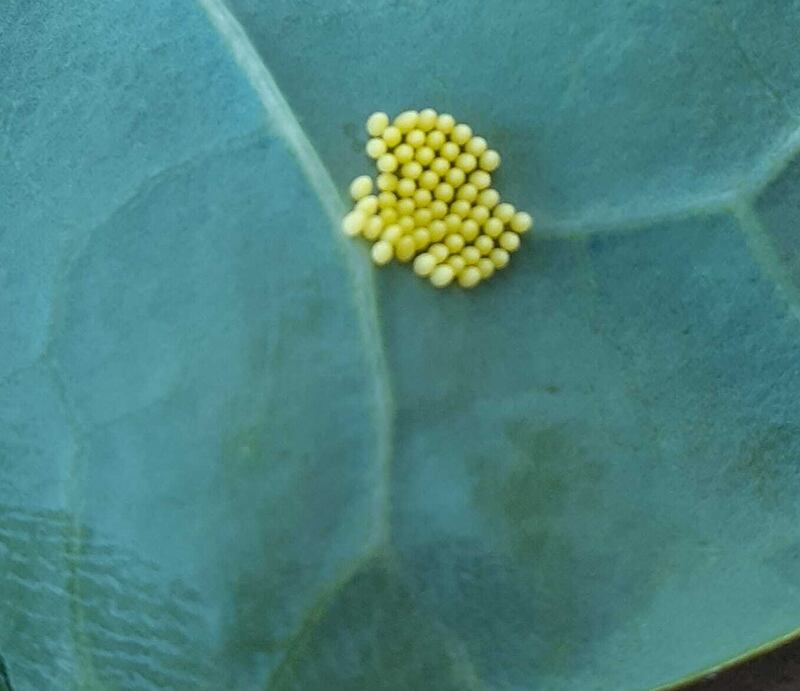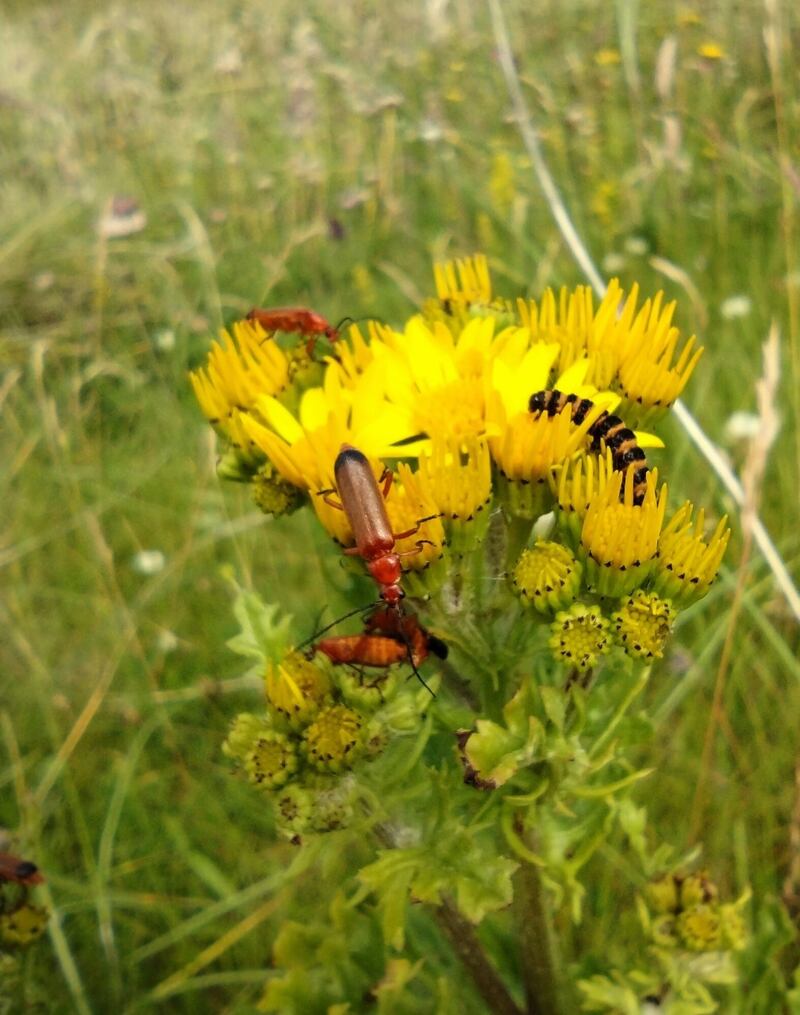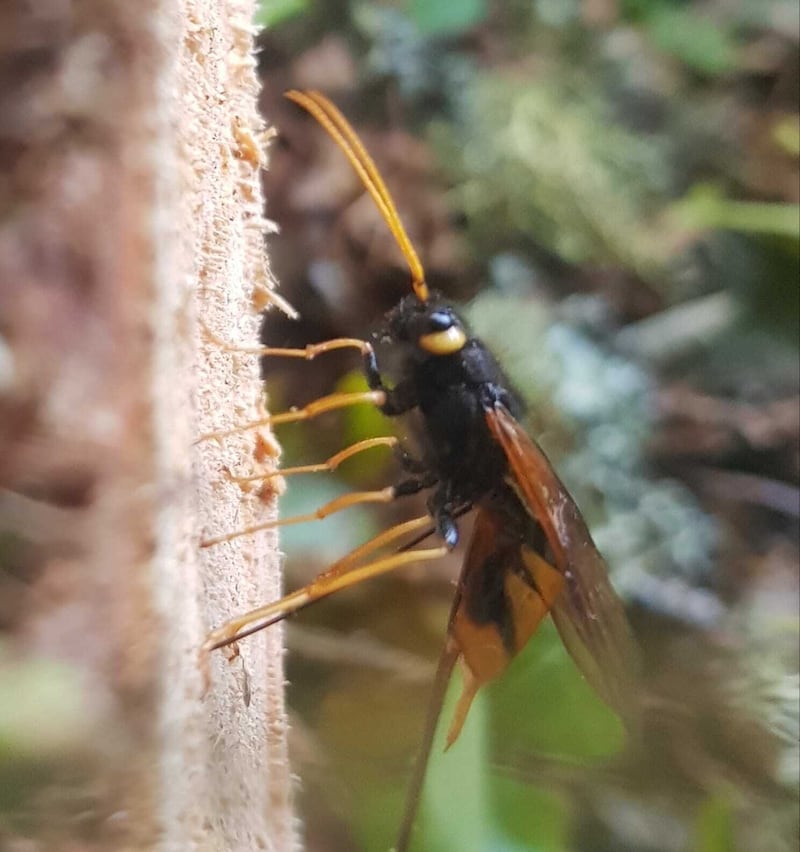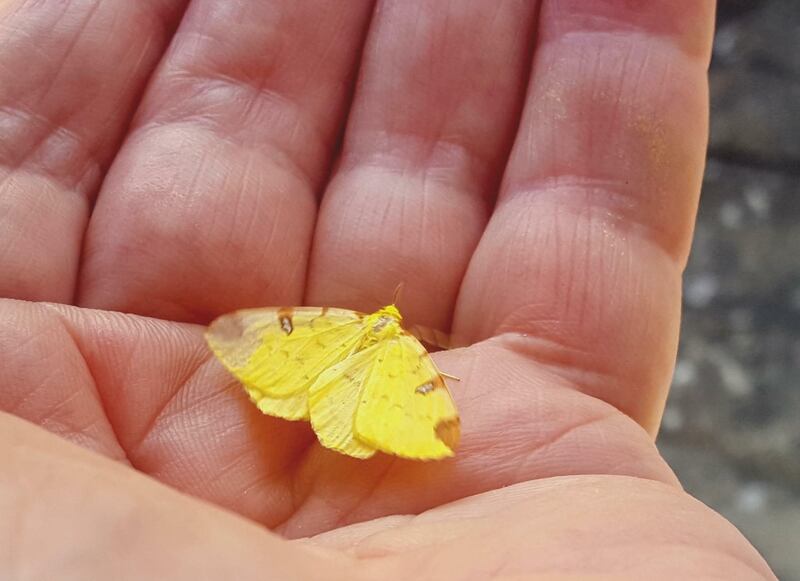This green-eyed horsefly followed us for a good 10 minutes across the lake. Any opportunity it got to bite, it took. I’ve never seen one like this before and am wondering what it is exactly. Richard Moeran
It is a bloodthirsty female horsefly, Chrysops relictus, which needs to fill up with mammal blood before it can lay its eggs. The male is a harmless poor soul that feeds on nectar.

We found these little eggs on the underside of our Brussels sprout leaves. Could you tell us what they are please. Colette McCormack, Co Wexford
These are the eggs of the large white butterfly. They hatch into black- and yellow-striped caterpillars, which feed voraciously on the leaves of brassicas such as cabbage, Brussels sprouts and nasturtiums.
READ MORE

The sand dune vegetation is in full bloom at the moment and full of such summer insect life as the cinnabar moth caterpillar and soldier beetles in this photograph. Does their colouring help deter predation? Michael Cross, Co Donegal
It does indeed. These colours, both the red and the yellow and black stripes, warn birds that the insects may have eaten plants with toxins and will taste horrible. Having eaten one, they will never try another. Ladybirds use the same strategy too; they contain formic acid.

I spotted this flying insect when cutting wood. It went straight for the sap of a fresh log we had cut. It seemed huge. I’ve had a look in a guidebook and it seems to be a sawfly of some type? John Duncan, Co Clare
You can’t beat a good guidebook. It is indeed a female sawfly, also called a woodwasp or horntail. It uses its long ovipositor to bore a hole in the timber into which it lays its egg. The new adult will emerge in three years’ time.

This lovely small yellow moth flew into my bedroom recently. Is it a brimstone? Bobby Carty, Co Dublin
It is. Its caterpillars feed on hawthorn and blackthorn. The adult flies at night between April and September and is attracted to lighted windows.
Have you a nature query, observation, or photo you would like to share with The Irish Times? Submit it, with a location, via our website www.irishtimes.com/eyeonnature














